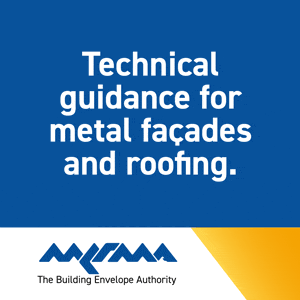Fire damper maintenance – a testing issue
- Specify & Build
- Sep 8
- 3 min read
Well-maintained ventilation ductwork largely depends on good access – not only for cleaning, but also for the regular specialist cleaning and testing of fire dampers, as Gary Nicholls, Managing Director of Swiftclean, explains.

There are two main reasons why we need to access ventilation ductwork. Firstly, to clean and remove impurities that could otherwise be circulated in the air; and, secondly, to inspect, clean, test and maintain fire dampers. Fire dampers are installed in a ventilation system as a vital fire prevention measure. In many buildings, such as schools, colleges, hotels, hospitals and office blocks, there are long corridors with rooms leading off them. Each room will have one or more internal fire-resistant walls, either to create a compartment to contain a fire, or delay its spread. The ventilation system could serve all these side rooms, its ductwork passing through a fire-resistant wall and creating an opening in the fire-resistant compartment.
While it is desirable for air to circulate freely around the building, openings in fire-resistant walls create a channel through which fire can travel to other parts of the building. Therefore, a temporary means of restoring the compartment and delaying the spread of smoke and flames is essential. To meet this need, fire dampers are installed in the ductwork at the point at which it passes through the wall. The fire damper comprises a set of louvres, which remain open under normal circumstances to allow air to circulate, but which close automatically in the event of fire to form a barrier, preventing or delaying the spread of smoke and flames.
To clean and maintain ventilation ductwork, we have to access it. Sadly, though, that hasn’t always been our experience. In the past, systems were installed without the full remit of access points required to clean the system. This meant that on the system’s very first clean, it was necessary to retrofit additional access points to allow the whole system to be cleaned. Fortunately, times are changing, and it is becoming a requirement to design into each new system all the necessary access points to allow the cleaning and maintenance of the entire system.

Ventilation ductwork would also often deliberately hidden for aesthetic reasons. In many instances, a suspended ceiling would be used to hide ductwork, as well as pipework and electrical wiring. However, sometimes a fixed ceiling would be installed to hide utilities, making access for future maintenance extremely difficult, if not impossible. Not only does lack of access compromise ventilation ductwork hygiene and indoor air quality, but it also inhibits the testing of fire dampers within the ductwork.
Fire damper inspection and testing is a legal requirement. They should be function tested in accordance with BS:9999 at least every 12 months, to ensure that the damper blades will drop into the closed position in the event of a fire. Should any fire damper fail this test, it must be repaired and retested.

Ventilation ductwork should be cleaned in accordance with TR19 Air, the specification issued by the Building Engineering Services Association (BESA). This helps to maintain good air quality. The fire dampers should also be cleaned as part of this service to ensure functionality. Exactly how frequently ventilation ductwork should be cleaned will depend on its usage and classification and is, again, clearly set out in TR19 Air.
A typical ventilation system should be cleaned every three to five years, and tested every 12-48 months depending on its classification, making it possible that the annual fire damper test could be missed several times before a routine ductwork clean reveals the presence of fire dampers. Compliance must then be achieved as quickly as possible.
Ductwork cleaning and fire damper testing are specialist tasks that should be conducted by technicians with appropriate competence, and training to BESA specifications. TR19 Air recommends using a member of the BESA Vent Hygiene Register, as this ensures you can be issued with post-clean certification issued by BESCA – the certification arm of the BESA).
.png)























































.png)

